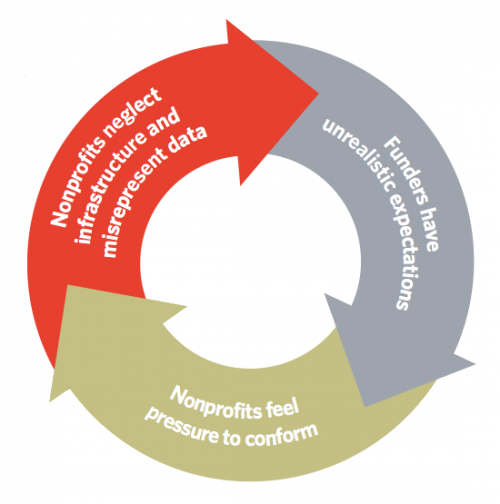Starvation begets starvation
An article that confirms my anecdotal experience: “ The Nonprofit Starvation Cycle” from the Stanford Social Innovation review:
A vicious cycle is leaving nonprofits so hungry for decent infrastructure that they can barely function as organizations—let alone serve their beneficiaries. The cycle starts with funders’ unrealistic expectations about how much running a nonprofit costs, and results in nonprofits’ misrepresenting their costs while skimping on vital systems—acts that feed funders’ skewed beliefs. To break the nonprofit starvation cycle, funders must take the lead.
That quote is from the brief, yet the last sentence is misleading. According to the article change starts at the board:
Nonprofits must then speak truth to power, sharing their real numbers with their boards and then engaging their boards’ support in communicating with funders. Case studies of organizations that have successfully invested in their own infrastructure have repeatedly noted the need for a shared agenda between the leadership team and the board.
And the article is chock full of fun, familiar anecdotes:
Not only do funders and donors have unrealistic expectations, but the nonprofit sector itself also promotes unhealthy overhead levels. “The 20 percent norm is perpetuated by funders, individuals, and nonprofits themselves,” says the CFO of one of the organizations we studied. “When we benchmarked our reported financials, we looked at others, [and] we realized that others misreport as well. One of our peer organizations allocates 70 percent of its finance director’s time to programs. That’s preposterous!”
From Mission Measurement by way of Entry Level Living’s Allison Jones. Illustration by David Plunkert (it’s included in the article).

